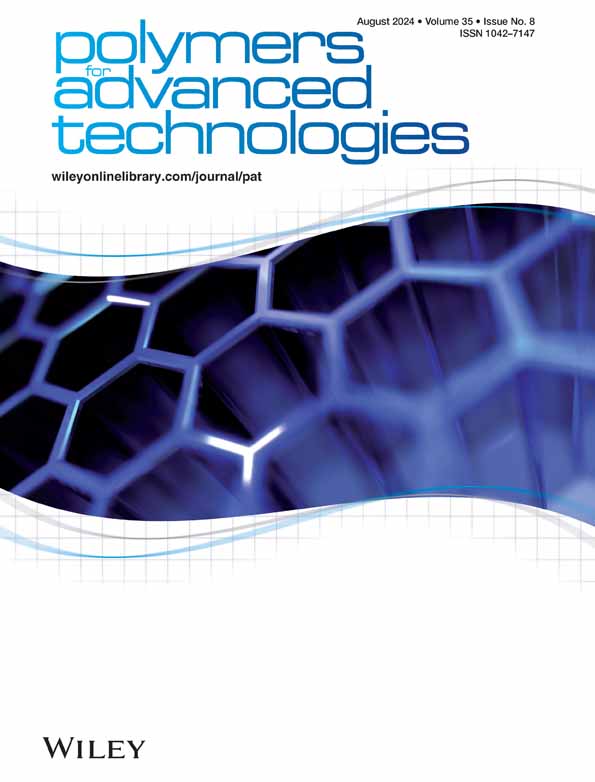多目标优化含硅芳基乙炔树脂基复合材料的树脂传递模塑固化工艺
IF 3.4
4区 工程技术
Q2 POLYMER SCIENCE
引用次数: 0
摘要
含硅芳基乙炔树脂(PSA)-基体复合材料因其优异的耐热性能而在航空航天领域具有巨大的应用潜力。近年来,人们通过材料基因组方法(MGA)设计出了许多具有特定功能的 PSA,同时还需要筛选出合适的树脂传递模塑(RTM)固化工艺,以便在低成本和高质量之间取得平衡。本研究开发了一种基于有限元固化模拟和多目标遗传算法的新型工具,用于优化新型 PSA 基质复合材料的 RTM 固化工艺。研究选择了含硅芴乙炔树脂(PSA-VBF)作为研究对象,系统地描述了其表观固化动力学特性。为了解决 RTM 过程中注射口树脂爆炸聚合的问题,使用遗传算法对固化过程进行了多目标优化,以获得以树脂注射口最大温度梯度、复合材料最大固化梯度和过程时间为目标的帕累托前沿。此外,还进行了全局敏感性分析,以确定关键参数。结果表明,优化后的固化工艺可以显著降低温度梯度和固化度梯度,提高固化效率。本文章由计算机程序翻译,如有差异,请以英文原文为准。
Multiobjective optimization of resin transfer molding curing process for silicon‐containing arylacetylene resin‐matrix composites
Silicon‐containing arylacetylene resin (PSA)‐matrix composites hold great potential for aerospace applications due to their excellent heat resistance. In recent years, many PSAs with specific functions have been designed via materials genome approach (MGA), and appropriate resin transfer molding (RTM) curing processes need to be screened to strike a balance between low cost and high quality. In this study, a novel tool based on finite element curing simulation and multiobjective genetic algorithm was developed to optimize the RTM curing process for novel PSA‐matrix composites. The silicon‐containing fluorenylacetylene resin (PSA‐VBF) was selected as the object to systematically characterize its apparent curing kinetics. To address the problem of explosive polymerization of the resin at the injection port during the RTM process, a multiobjective optimization of the curing process using a genetic algorithm was performed to obtain the Pareto front with the maximum temperature gradient at the injection port of the resin, the maximum degree of cure gradient of the composites, and the process time as the objectives. A global sensitivity analysis was also conducted to identify the key parameters. The results demonstrate that the optimized curing process can significantly reduce the temperature gradient and the curing degree gradient with improved curing efficiency.
求助全文
通过发布文献求助,成功后即可免费获取论文全文。
去求助
来源期刊

Polymers for Advanced Technologies
工程技术-高分子科学
CiteScore
6.20
自引率
5.90%
发文量
337
审稿时长
2.1 months
期刊介绍:
Polymers for Advanced Technologies is published in response to recent significant changes in the patterns of materials research and development. Worldwide attention has been focused on the critical importance of materials in the creation of new devices and systems. It is now recognized that materials are often the limiting factor in bringing a new technical concept to fruition and that polymers are often the materials of choice in these demanding applications. A significant portion of the polymer research ongoing in the world is directly or indirectly related to the solution of complex, interdisciplinary problems whose successful resolution is necessary for achievement of broad system objectives.
Polymers for Advanced Technologies is focused to the interest of scientists and engineers from academia and industry who are participating in these new areas of polymer research and development. It is the intent of this journal to impact the polymer related advanced technologies to meet the challenge of the twenty-first century.
Polymers for Advanced Technologies aims at encouraging innovation, invention, imagination and creativity by providing a broad interdisciplinary platform for the presentation of new research and development concepts, theories and results which reflect the changing image and pace of modern polymer science and technology.
Polymers for Advanced Technologies aims at becoming the central organ of the new multi-disciplinary polymer oriented materials science of the highest scientific standards. It will publish original research papers on finished studies; communications limited to five typewritten pages plus three illustrations, containing experimental details; review articles of up to 40 pages; letters to the editor and book reviews. Review articles will normally be published by invitation. The Editor-in-Chief welcomes suggestions for reviews.
 求助内容:
求助内容: 应助结果提醒方式:
应助结果提醒方式:


